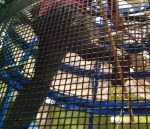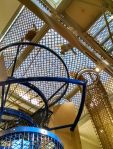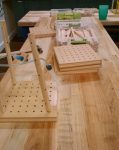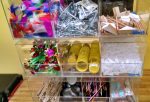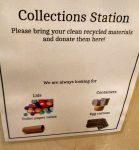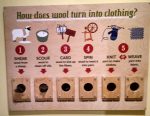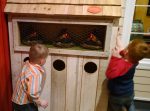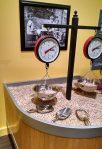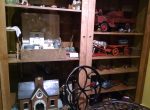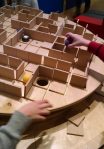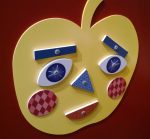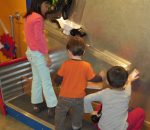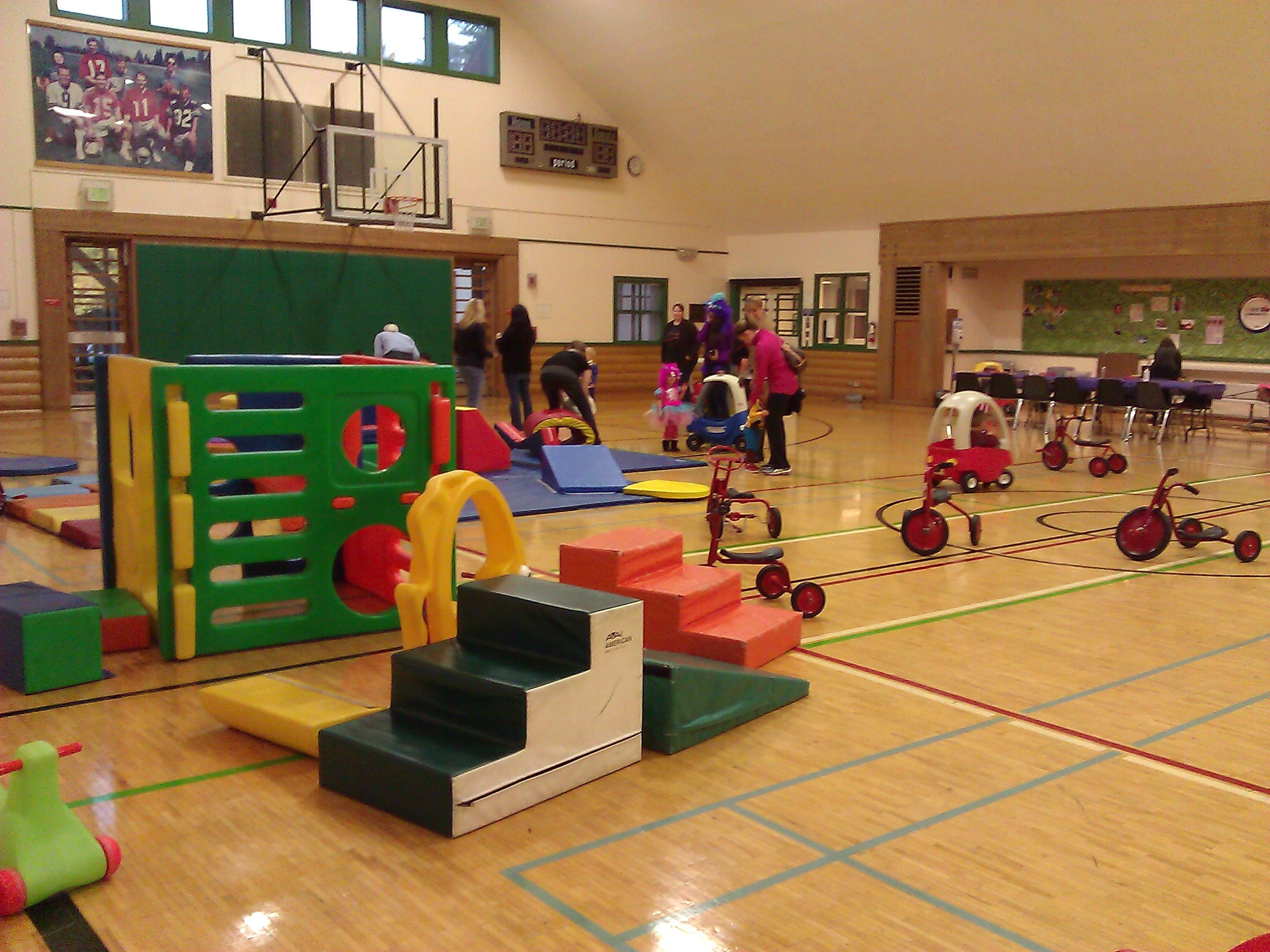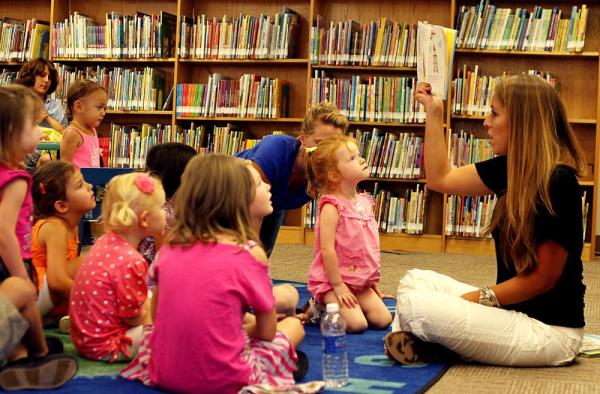
TL/DR summary: At some Regal cinemas, including the Meridian in Seattle, they have 4DX movies which include chairs that rock and shake, water and wind effects. Although it’s not an experience I would do many times, it was a lot of fun for the right movie, for adults and older kids.
Last week, I was listening to the Filmcast podcast, and they shared an email from a listener who had joined a friend at a movie, not knowing it was a 4DX screening, and how startled they were when the seats started shaking (“my friend’s mom screamed!”) and when they were sprayed with water, and the experience of “getting punched in the kidney” by the chair when a character on the screen was shot.
This entertaining anecdote raised my curiosity about 4DX movies, and I started thinking about what movie I’d want to see in 4D. I didn’t want to try it on a movie I was super invested in watching, because I was afraid it would distract me from the movie.
Then the next day, I was trying to talk my 12 year old boy into going to see the new Little Mermaid. And I realized this was the perfect opportunity! It was a “new” movie, but I knew the plot and many of the words. And, I have mixed feelings about these Disney remakes – my brain sees them as a cynical money-grab (and wow does Flounder look terrible in this movie!) but my heart sings along so happily with the familiar songs and the new twists that new actors bring to very specific line reads… Melissa McCarthy’s “Poor Unfortunate Souls” is pretty great.) So, the option to have a different kind of movie-going experience along with a movie retread made it more appealing to me. And, the promise of the 4DX experience intrigued my son who wasn’t that enthused about “a princess movie”.
Where is 4DX available?
In the Seattle area, there’s only one 4DX theater – the Meridian in downtown Seattle. The parent company CJ4DX says there are 788 theaters in 69 countries. Their locator tool is here – it’s buggy but it seems to work if you drag the map around, then click on the pins. Wikipedia says that as of 2020, there were 32 in the U.S. mostly at Regal theaters.
Here’s a trailer for the 4DX experience.
So, what is 4DX ?
We saw the movie in 3D, with good sound, plus these effects as listed on the CJ4DX site:
- Motion chair: Roll, Pitch, Heave, Back Shaker, Bottom Shaker, Back Tickler, Bottom Tickler
- Air: Face Air, Air Shots, Wind, Warm Air
- Water: Rain, Rainstorm, Fog
- Lightning, Flashing Lights
- Scents, Snow and Bubbles
What was the experience like?
During the first few trailers, I had the “is my chair vibrating? Or is that just the vibration from the heavy bass in the sound?” I wasn’t sure what I was looking for.
And then they played a 4D Indiana Jones trailer. At the first jolt of the chairs, several people in the theater screamed. Then we all laughed together. Apparently this was a new experience for many of us, and we were ready for the ride. The seats started shaking and rolling, like you’d experience on a 4D motion simulator ride. (There were a few minor beverage spills amongst our neighbors during the movie.) When lights flashed on the screen, lights up near the ceiling flashed, like lightning bolts. When wind blew on screen, it blew on us. The remaining trailers were all 3D and 4DX, so we got a taste of what those movies would be like in this format.
By the end of the trailers, I was enjoying the experience, but I wondered if I would be tired of it by the end of a 2:15 movie. I was wishing that I’d grabbed a drink at the theater’s bar on the way in instead of a water bottle at concessions… as someone in my late 50’s, a muscle relaxant before being tossed around on amusement park rides isn’t a bad thing… In the end, though, I didn’t tire of the effects and I’m not stiff and sore the next day as I might be after a day on roller coasters. (FYI, here’s the health warnings for this experience – like amusement park rides, they make it sound worse than it is.)
Little Mermaid was a great movie to see in this format.
Visuals:
When the trailers for the movie came out, people complained they were dark and murky. And certainly there are several dark underwater scenes (director Rob Marshall explains the reason for this was to capture the sense that the deeper you go in the sea, the darker it is.) But in this format, the film looked great! (There were a few seconds in the Ursula scene where it was too dark but that was it.)
The underwater scenes were beautiful. It felt pretty magical to be “under the sea” in the movie. The gentle motion of the chairs as characters swam through the sea enhanced the effect. The colorful market scene was fabulous too.
Movement and Touch
In swimming scenes and one really great scene of Scuttle flying, the movement was soft and flowing. At one point when Ariel was swimming downward, the chairs just tilted gently forward. (If you’ve ridden the “Soaring over California” ride at Disney it’s a bit like that.) It was pleasant and engaging. Some reviewers have said that some of the longer scenes in this longer movie dragged, but I never felt that way with the more immersive experience – I would have been happy to “swim” and “fly” for longer.
At times, the chair shakes a bit to echo loud noises or sudden movements on the screen. If the mermaid on screen suddenly turns and swims away, you get a swoosh of movement to match that.
Other times, the movement was much more dramatic – the shark attack, the storm at sea, the time in the horse carriage that’s running away with them – the movement is much more dramatic – rolling and shaking. That’s the amusement park level movement. It was a bit much for me just a couple brief periods in the movie, but my son loved it.
In the Regal movie listings, they describe the seats as “butt kicker” seats, and there are times where you get thumped on the back – like when someone gets bumped on screen, or when the ship’s bowsprit stabs Ursula. It’s not the “getting punched in the kidney” feel like the person on the podcase described – more like having someone knock on your back like they’d knock on a door. Again, it was a fine part of the experience except one scene where I ended up leaning forward to avoid more thumps.
Air and Water Effects
I wondered how wet I would get… You do have the option to turn your water effects off, but I left mine on. It’s totally fine, even in Little Mermaid, which is obviously a water focused movie… we got misted a few times, and sometimes “rain” fell on us or water splashed while they were on a boat. It was enough to notice, but never enough that I felt like I had to wipe it off my face, and not enough that my clothes got anything other than a very light misting. So, it was just another fun level of immersion and engagement.
The wind included both little puffs at your shoulders and wind in the theater. The pro was that it was engaging and pulled you into in the movie experience. The con is that I was already cold with my sweater on and sweatshirt covering my lap, and the wind made me colder. (So, I advise bundling up, even if it’s warm outside.) There are apparently little puffs by your ankles too, but I put my foot up on the chair so I don’t notice. Those can be used for things like waves swirling around feet.
My son and husband did not notice any smell effects. There were definitely 6 or 7 times in the movie when I noticed them – often at the seashore / ocean parts, but once in the market. I think it was the same smell each time and I don’t know what it was supposed to smell like – it smelled kind of like burning incense maybe?? Nothing too clear. Artificial scents often give me headaches, but this one didn’t. Maybe it’s better in other movies?? Although apparently “snow” and “bubbles” are possible but we didn’t see any.
Is it Good for Kids? Elders?
I don’t think I’d take my 86 year old father-in-law – I think it would trouble him and be uncomfortable.
Most of the people in our theater on a Saturday night were adults, but there were some kids and they seemed to have a good time.
I think almost any kid age 7 and up would enjoy the effects. (Of course, if you have a kid with sensory issues who finds just a movie overwhelming, this would just be way too much…) Many 5 – 6 year olds who have done amusement park rides and enjoyed them would be fine. Little kids don’t have the option: Kids have to be at least 4 years old and at least 3 1/2 feet tall to attend.
I would also think a lot about the content… if the action scenes in the movie are mostly fun (racing around in a Mario Kart) then the immersion is fun. If they’re already going to be on the scary side for your kid, then having this higher level of immersion / engagement could make it even scarier for them. Like in Little Mermaid in Ursula’s cave there were “monsters / unfortunate souls” grabbing at Ariel, and your chair was rocking and hitting at you and I think that might be overwhelming for young kids.
What Movies are Available
Only some movies are available in this format (list here). The ones this summer include: Guardians of the Galaxy, Fast X, Indiana Jones, the Flash, Elementals, Transformers, and Spiderverse. If deciding which one to try, you could imagine what the different scenes might be and how they might use the available effects to amplify them.
Cost
It’s pricier for sure than a regular movie. At the theater we were at in downtown Seattle, on Saturday night, the 4DX price for adults is $28, 3D is $22.55, and 2D is $18.55. At a theater on the Eastside suburbs, I could see it for $16.05 in 2D. However, I think it’s enough different of an experience to be worth the cost difference.
What about D-Box?
There is also something called D-Box. I know it’s available in some seats at the Cinemark in Totem Lake in the Seattle area. We’ve not tried it. It has motion seats but none of the other effects. Another reviewer summarizes the experience as “I really wasn’t impressed with them, and even less so now, having experienced 4DX… they’re basically “rumble seats.” They have some movement, but I found them to be more of a distraction than a compliment to the film… their best feature was the ability to disable them.”
Would I do it again?
Yes. It was fun, and for just the right movies, I think it adds to the experience and makes it more of an event. And it’s very different from the experience you have at home on your couch so definitely a “magic of the theater” thing.
Would I do it often? No. I think mostly I’m happy watching movies in a comfy recliner at a typical showing. But, your mileage may vary.
Here are a few more reviews of the experience: Terminator Dark Fate in Orlando, Spiderman Far from Home in Seattle, Conjuring – the Devil Made Me Do It, and Venom.
About this blog: I cover topics related to parenting. I have several posts on activities to do in the Seattle area. You may be interested in my post on Summer Movies 2023 which lists summer movie clubs, outdoor cinema, and drive-in theatres in Seattle, King County, and Western Washington.


